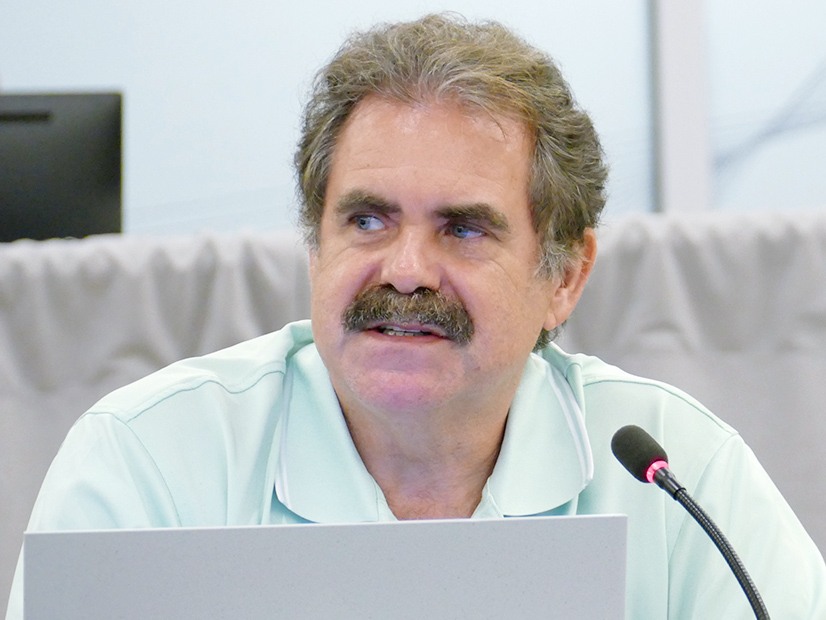PJM Proposes Changes to Demand Response Availability Window
VALLEY FORGE, Pa. — PJM’s Pat Bruno presented three initial design components to rework the availability window for demand response (DR) resources. The window determines when the curtailment capability is evaluated as accredited capacity and expected to be online for dispatch. (See PJM Stakeholders Discuss DR Winter Availability.)
Demand response providers have argued the winter availability window, which spans 6 a.m. to 9 p.m., misses a significant amount of capability and artificially constrains the value DR can provide.
“As long as they commit to curtail in those hours, we believe there’s additional reliability value,” Bruno said.
PJM proposed expanding its analysis to a 24-hour availability window and creating estimated load and curtailment capability values for each hour. Separate summer and winter availability values still would be determined.
Bruno said the change would better improve incentives for curtailment service providers to enroll customers with flatter load profiles and the ability to reduce their consumption any time of day.
Calpine’s David “Scarp” Scarpignato said DR participants’ firm service level (FSL) is based on load during peak hours, and the further an increment is from that time the less accurate their FSL values will be. For DR that is offline or has significantly lower load at night, he said this could result in participants being paid to be available for curtailment when they would be offline. In the event of a performance assessment interval during the night, he said it also could result in capacity performance (CP) bonus payments to consumers that would have been offline regardless of their commitment.
“If they don’t take any action, they shouldn’t get a bonus … but if they take an action, they should get paid,” Scarp said.
PJM also proposed modifying the winter peak load (WPL) calculation to be based on load during five winter coincident peak days when modeling DR winter capability. Bruno said this would address an overstated WPL.
The third proposal would create an hourly winter DR load shape using aggregate hourly load profiles to account for the different patterns between system and DR load. No change would be made to the summer process.
Bruno said PJM plans to run effective load carrying capability (ELCC) analysis on the impact the proposals may have on resource accreditation and present the results at future stakeholder meetings.
Independent Market Monitor Joe Bowring said PJM’s proposals could create inconsistencies with generator ELCC values that are based on actual performance data for a small number of very high-demand winter hours, while DR would be accredited based on expected capability.
“Actual performance data should be used consistently for all resource types under the current PJM approach to ELCC in order to avoid creating preferential treatment for any resource class,” he said.
Issue Charge Rethinking External Resource Capacity Rules Endorsed
Stakeholders endorsed by acclamation an issue charge brought by the North Carolina Electric Membership Corp. to revise several aspects of how external, pseudo-tied generators interact with PJM’s capacity market. (See “External Resource Capacity Clearing,” PJM MIC Briefs: Sept. 11, 2024.)
Presenting the issue charge on behalf of ACES Power, Executive Director of Regulatory Strategy John Rohrbach said it seeks to harmonize the regional clearing price external resources receive with how CP penalties are calculated. Under the status quo, he said external resources are assigned to the rest-of-RTO zone when determining the clearing price they receive. But the penalty rate they are held to can be based on the specific locational deliverability area where their energy is delivered.
Responding to stakeholders questioning whether the CP penalty rate and annual stop-loss limit calculations would be in scope, Rohrbach said the issue charge does not seek to modify the calculations, but rather ensure they are applied consistently between internal and external generators.
Rohrbach said the issue charge also seeks to recognize the expected output of external resources when determining load serving entities’ self-supply obligations — in other words, counting those units toward meeting their reliability requirement.
Third Phase of Market Rules for Hybrid Resources Endorsed
Stakeholders endorsed a PJM proposal to establish rules for non-inverter generators paired with storage — the third phase of its hybrid resource paradigm. The changes are set to go for a first read at the Markets and Reliability Committee Oct. 30 and a vote Nov. 20. (See “PJM Proposes Rules for Non-inverter Hybrid Resources,” PJM MIC Briefs: Sept. 11, 2024.)
Non-inverter hybrids participating in the energy and ancillary service markets would be modeled as storage akin to PJM’s Energy Storage Resource Participation Model detailed in Manual 11. PJM’s Maria Belenky said staff examined how this would interact with gas fuel availability.
Accreditation would be based on the battery as the primary resource, while also considering the availability of the non-inverter resource. That combination may lead to a final result differing from the ELCC values for standalone storage.
Hybrids with a component that would be subject to the requirement that resources offer into the capacity market also would be required to offer.
The changes also seek to generally fine tune hybrid rules, such as allowing the generation owner to determine whether the storage component would be offered as a closed or open loop. Belenky said current rules categorize storage based on physical capability, but there may be instances where a battery capable of charging from the grid instead may be contractually limited to drawing from the generator it is paired with.
PJM Presents Conforming Revisions to Manual 28
PJM’s Suzanne Coyne presented a first read on revisions to Manual 28: Operating Agreement Accounting to codify the lost opportunity cost (LOC) payments for hybrid resources.
The changes include the formula for LOC credits and the deviation calculation. Both were added to the Tariff and Operating Agreement as part of PJM’s Phase 1 of hybrid resource rules, which was accepted by FERC in September 2023 (ER23-2484).



